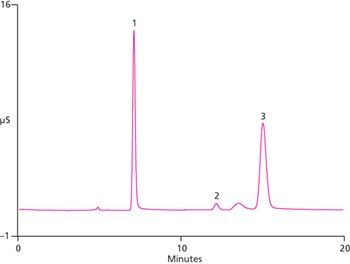
Adulteration is a significant problem for the olive oil industry because of the product’s high value. With the demand for olive oil expected to rise significantly, this problem is set to increase. Reliable and accurate determinations of olive oil adulteration are therefore required to maintain product integrity. This article introduces a principle component analysis‑based approach that uses data obtained by high performance liquid chromatography (HPLC)-charged aerosol detection (CAD) to determine extra virgin olive oil adulteration by common vegetable oil adulterants. Using only sample dilution and analysis, the method could be used to assess olive oil quality relative to pomace oil.



